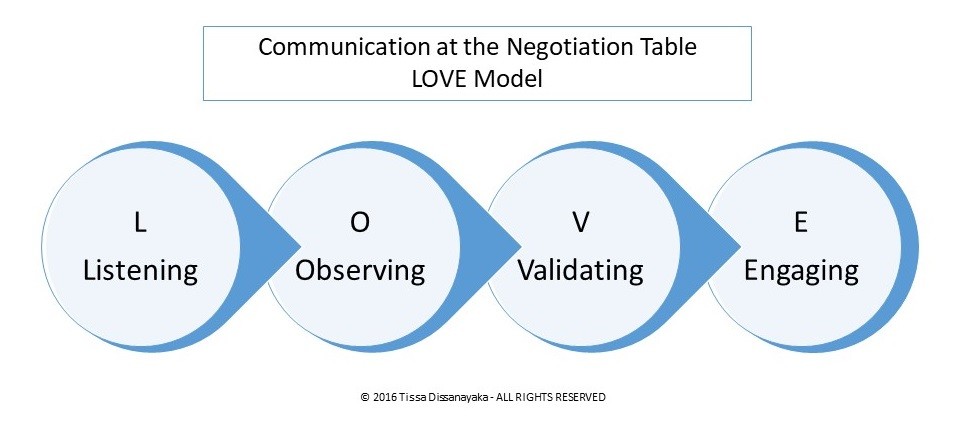Do you know how to communicate at the negotiation table?
Your success at the negotiation will depend on two factors.
1. How well you PREPARE before reaching the negotiation table
2. How well you COMMUNICATE at the negotiation table
Quality of preparation before arriving at the negotiation table is critically important to achieve a successful outcome. If you fail to prepare; then prepare to fail. How to prepare for negation is a subject by itself. I shall deal with “Preparation” in a separate article. The objective of this article is to take you through the latter, COMMUNICATION at the table.
“Negotiation is an act of influence” says Professor William Ury, Co-founder of Harvard Negotiation Program.
Effective communication is one of the key elements that helps to influence the other at the negotiation table.
Negotiations, be it in your professional or personal life, is about understanding shared interests and working together with your negotiating partners to create and distribute values. Thus understanding the other and communicating properly is critically important.
Do you know that words accounts for 7% what you communicate and Non-verbal’s accounts for rest (93%) that includes tonality (how you say) and body language? Hence one has to get them both (7%+93%) right; to communicate effectively.
To make this easy, I have developed “LOVE” model, to manage communication at the negotiation table.

Listening – I wish to term this as “Deep Listening”. Quality of negotiation outcome is NOT depending on quality of talking but quality of listening. Deep Listening will help not only to understand what the other says (7%) but also to understand what they don’t say. (Click this link to read my previous article on Deep Listening).
Observing – In order to understand the non-verbal part; one has to observe the body language of the negotiating partner. You have to start this with understanding the base lines of body language indicators to bench mark them. This means to understand Standard body language indicators of the others in relaxed environment. You need to understand this before or at the beginning of the interaction. If this is not possible at beginning, then picture in your mind how you would expect them to behave in relaxed environment. Understanding baseline body language indicators will help to identify subtle variations under stress or pressure situations.
Validating – Body Language indicators could vary by country, culture and gender differences. You need to validate specific indicators with due consideration to above factors before deciding implications. It is important to validate these signals in cluster formations. That means one should not rely on isolated or single indicators but to validate your understanding with other associated or similar body language signals for consistency.
Engaging – Observing and Validating will help to understand body language of negotiating partner. However, to reap the full benefit you have to purposefully and appropriately engage YOUR body language indicators reinforce what you say. When there is a conflict between what you say and your body language, then they tend to believe in your body language. If you master this skill it could work as a powerful tool at the negotiating table.
Objective of this article is not to give you tips, tools and tricks of Body Language but to alert you to importance of learning this vital communication skill. Learning Body Language is a life-long exercise that we keep on updating and sharpening our ability with new found knowledge and learning.
Body Language comprised of many clusters of expressions that includes head movements, ears, lips, nose, eye contacts and eye movements, hand gestures, facial expressions, postures, feet placements and other dozens of micro expressions. Not reading them or misreading them could eventually end up with sub-optimal outcome at the negotiation table.
Body Language is outward reflections of inner feelings. If you master the art of body language it could be your crystal ball.






